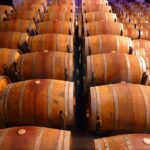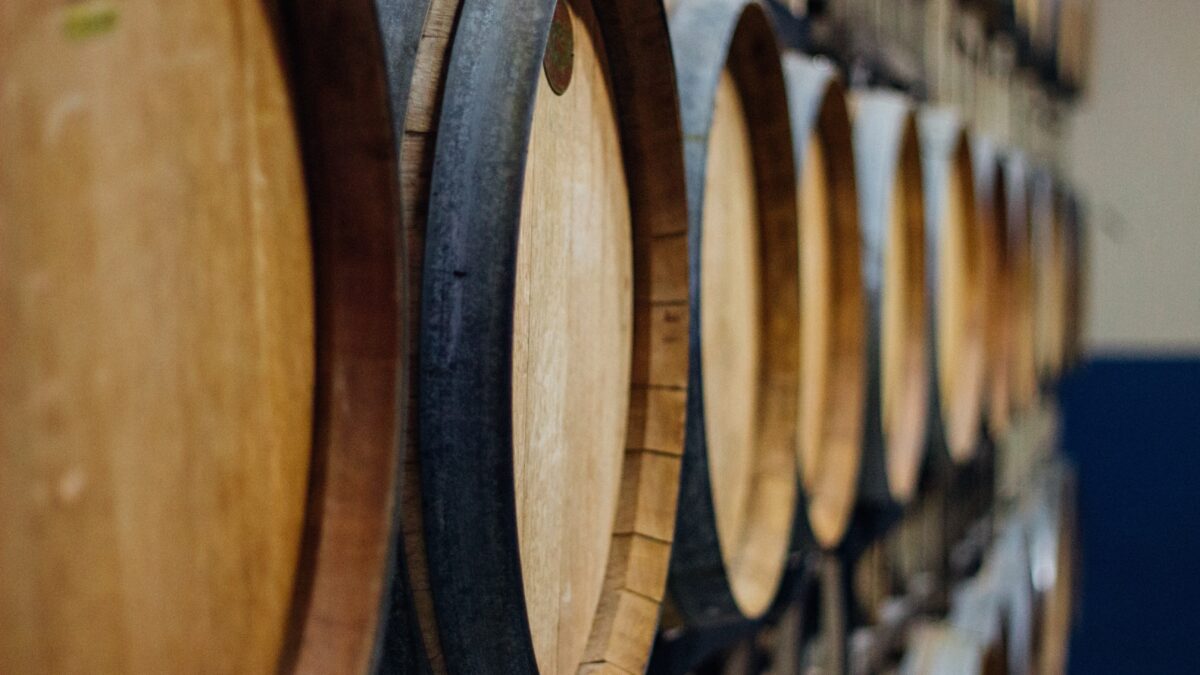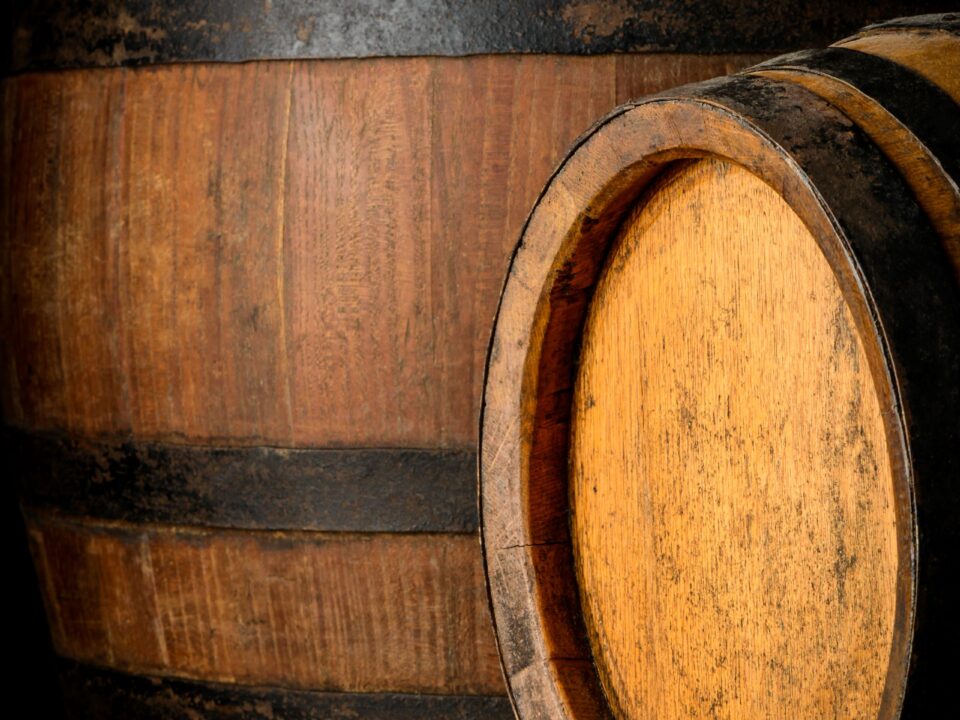
Aging Gracefully: The Art of Whiskey Maturation
December 26, 2023
Wine Barrel Cleaning and Sanitization: Best Practices for Winemakers
January 18, 2024To get its characteristic rich amber or brown color, bourbon must mature in barrels made of charred oak. To learn more about maturing bourbon in oak barrels, speak with a barrel expert at Rocky Mountain Barrel Company. The flavor profile of an aged spirit is notably influenced by the type of wood used in the aging process. Various factors, including the wood species and origin of the barrel, contribute to the distinctive characteristics of the final product.
Charred oak became the go-to wood for bourbon aging and distilling spirits and wine due to two key attributes. First, its porous nature allows liquid to freely move between openings as temperatures shift, absorbing compounds like hemicellulose, tannins, and lignin from its surface into the barrel that add complexity to flavor profiles such as those produced from ethanol’s harsh scent and other unwanted aromas from wood sources. Secondly, charring creates an effective barrier that blocks out unwanted flavors, such as the strong alcohol smell produced during production.
Bourbon flavor is influenced by multiple factors, including the type and region of origin of the barrel and the post-harvest treatment. There has been ongoing discussion among bourbon producers and connoisseurs about the optimal size of oak barrels. Some distillers may age their product in smaller oak barrels to intensify its taste profile, potentially creating an off-balance or bitter spirit.
What is Bourbon?
When whiskey is charred in oak barrels for around two to four years, it can be called bourbon whiskey. Additional regulations regarding its mash bill composition, labeling process, and production help create its distinct taste and aroma.
Alongside the mash bill, their barrel is another important element of bourbon distilleries. Each distillery will use its own custom oak barrels to age its product, while the type of wood used varies between American, French, and Sherry oak. Each type will add its own distinct character and flavors to the final product. Bourbon stands apart from other spirits by being aged exclusively in brand-new charred oak barrels, typically one for every year of production.
Why are Barrels Important For Bourbon?
The barrel plays a crucial role in the bourbon-making process, transforming neutral grain alcohol into a distinctly flavorful and colored spirit through the aging process in its wooden confines. Most of this flavor and color comes from the time spent inside its walls; any remaining hue comes from its mix with other grains in its mash bill.
You can either get the used Bourbon barrels or create the new ones. To create the new ones, wood is cut into long planks known as staves that measure slightly larger than their diameter and joined together using metal hoops. Once assembled, these staves must then either be toasted or charred depending on personal preference; toasting slowly browns over low heat while direct contact with fire leaves its insides blackened; however, charring must occur as this releases compounds found within oak that impart certain flavors and aromas into the final product, such as vanillin.
Charring releases sugars that will contribute to the sweetness and caramel flavors in whiskey. Bourbon Aging lasts three to five years in barrels stored in rickhouses – rows of wooden structures typically supported by bricks or concrete blocks – where climate influences its development, with warm summer days followed by freezing winter nights driving it into the wood for fast aging processes.
How Does Barrel Aging Work?
As bourbon ages inside the barrel, a sophisticated interplay occurs between its molecules and the elements within the wood, such as lignin, tannins, and diverse organic compounds. This intricate process adds to the richness and smoothness characteristic of well-matured bourbon. Charred oak adds additional layers of flavor, caramelizing its sugars for signature notes that set bourbon apart from other spirits. Distillers often experiment with various char levels to perfect their product. To learn more about the barrel aging process and why barrels play a crucial role in creating bourbon, contact Rocky Mountain Barrel Company now!
Wood’s porosity also plays an essential role in flavor creation. Air freely enters the used oak Barrels, setting off an abundance of redox reactions, which further contribute to flavor production. When oxygen reacts with alcohol or wood compounds, it may even produce carboxylic acid, which adds sweetness to whiskey. Distillers must consider barrel size when crafting their spirit. You can get the new barrels or even order high-quality used bourbon barrels for bourbon aging by getting in touch with one of the barrel experts at Rocky Mountain Barrel Company now!
Conclusion
Perfecting the aging process is a delicate art that demands precision for optimal outcomes. A finely crafted bourbon is distinguished by a symphony of complex flavors, including sweetness, smokiness, and a myriad of enticing aromas and tastes. As such, barrel aging is revered as a near-sacred practice, and any deviation from its meticulous process may suggest attempts to hasten or modify the maturation of this spirit. Barrel aging is an essential part of any bourbon-making process and demands good-quality Oak Barrels for the same purpose. If you are looking for the best-quality Oak Barrels or Used Bourbon barrels, get in touch with Rocky Mountain Barrel Company now!




